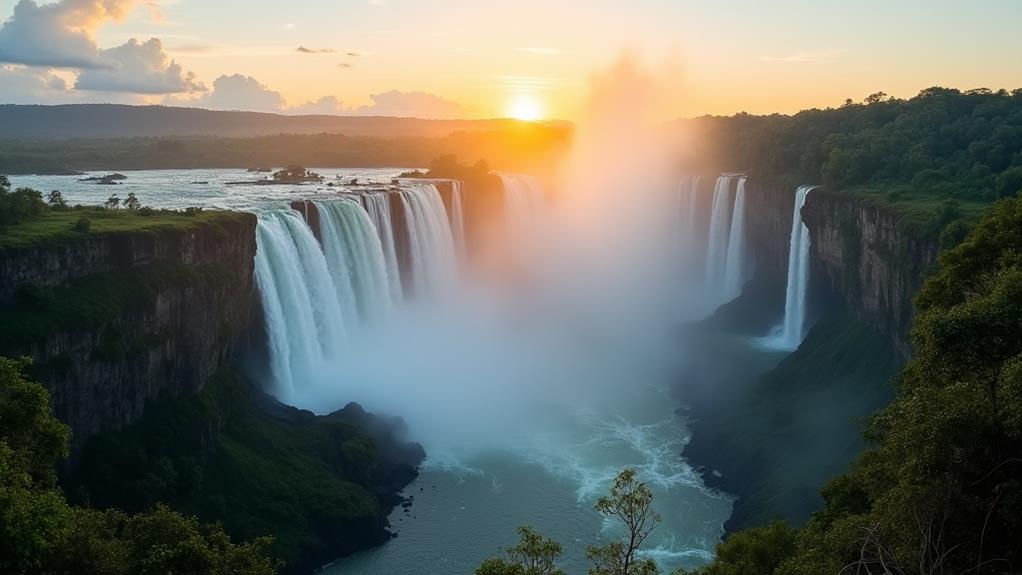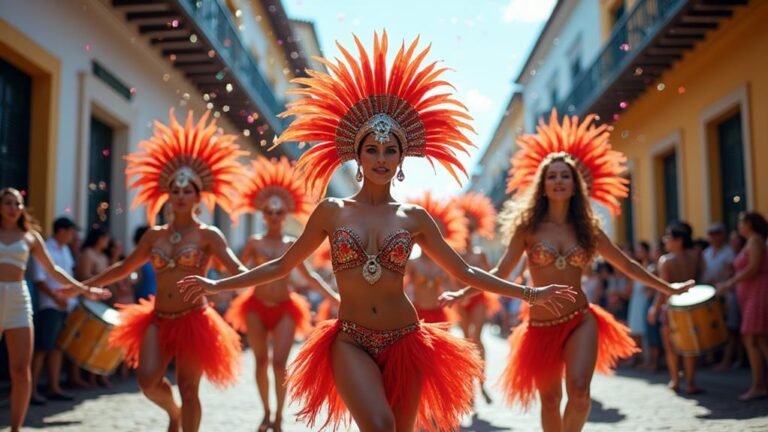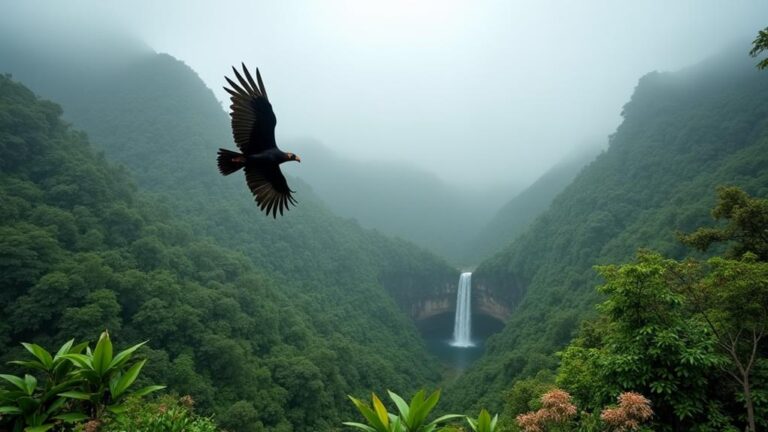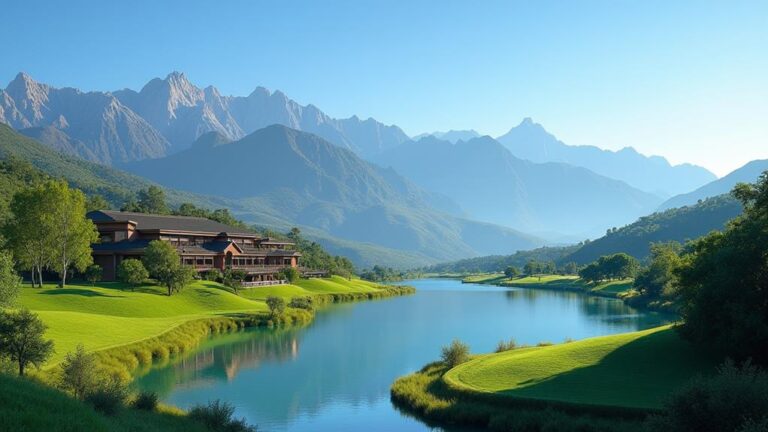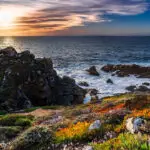You're envisioning a sultry summer in Rio, but meanwhile, the Andes are blanketed in snow. The contradictions of South America's climate can be intimidating, especially when planning a trip. While the peak season (December to March) brings vibrant festivals and warm weather, the dry season (May to September) is ideal for outdoor adventures. But what about the shoulder season, when prices drop and crowds dissipate? As you ponder your options, you'll need to think about the region, activity, and your personal preferences. So, where do you start, and what's the best time to visit this incredible continent?
Contents
- 1 Key Takeaways
- 2 Weather Patterns Across the Continent
- 3 Peak Tourist Season in South America
- 4 Best Time for Outdoor Adventures
- 5 Festival and Event Calendar Highlights
- 6 Avoiding the Rainy Season Blues
- 7 Shoulder Season Travel Benefits
- 8 Frequently Asked Questions
- 8.1 Do I Need Vaccinations to Travel to South America?
- 8.2 Can I Use Credit Cards Throughout South America?
- 8.3 Is It Safe for Solo Female Travelers in South America?
- 8.4 What Languages Are Spoken in South America Besides Spanish?
- 8.5 Are There Any Restrictions on Bringing Electronics Into South America?
- 9 Conclusion
Key Takeaways
- The best time to visit South America depends on the country and region, with varying climate zones and seasonal activities.
- Peak tourist season is December to March, with popular destinations like Rio and Buenos Aires experiencing high prices and crowds.
- The dry season (May to September) is ideal for outdoor adventures like mountain biking, jungle trekking, and exploring the Andes.
- Shoulder season travel (April to May and September to November) offers lower prices, fewer tourists, and a more authentic experience.
- Consider visiting during the shoulder season for better value, more personalized service, and a chance to engage with local culture without the crowds.
Weather Patterns Across the Continent
Vibrant cultures, majestic landscapes, and exotic wildlife await in South America, but before you set out on your adventure, knowing the weather patterns that shape this vast and diverse continent is vital.
South America spans a vast range of climate zones, from the tropical rainforests of the Amazon to the arid deserts of Patagonia.
You'll encounter regional variations in weather patterns depending on the country and even specific regions within a country.
For instance, Brazil's northeastern coast is hot and humid year-round, while the southern states experience a more temperate climate.
In Argentina, the Andean highlands have a dry, cool climate, whereas the Pampas grasslands are humid and subtropical.
Understanding these climate zones and regional variations will help you plan your trip accordingly, ensuring you're prepared for the weather conditions that lie ahead.
Peak Tourist Season in South America
During the southern hemisphere's summer months, from December to March, South America experiences its peak tourist season, with millions of travelers flocking to the continent to soak up the sun, explore iconic landmarks, and immerse themselves in local cultures.
As you plan your trip, you'll want to be aware of the crowds and long lines at popular attractions.
This is the time when tourist traps are at their most tempting, so crucial to do your research and find local secrets that will make your trip truly unforgettable.
- Popular destinations like Rio de Janeiro, Buenos Aires, and Santiago are bustling with energy, but also crowded and expensive.
- Accommodation prices skyrocket, so book in advance to avoid sticker shock.
- You'll need to plan ahead for popular attractions, like Machu Picchu or Iguazu Falls, to avoid long wait times.
- Consider visiting lesser-known destinations, like Colombia or Uruguay, for a more authentic and peaceful experience.
Best Time for Outdoor Adventures
You're likely enthusiastic to trade city streets for scenic trails and experience the great outdoors of South America.
If you're planning an outdoor adventure, the dry season (May to September) is ideal for exploring the continent's vast wilderness.
During this time, the Andes mountain range offers perfect conditions for mountain biking, with dry trails and mild temperatures.
In the Amazon rainforest, the dry season makes jungle trekking more accessible, with fewer muddy trails and a lower risk of flooding.
In Patagonia, the southern hemisphere's spring (September to November) and autumn (March to May) bring mild temperatures and fewer crowds, making it an excellent time for hiking and camping.
The scenic trails of Torres del Paine National Park in Chile and Los Glaciares National Park in Argentina are particularly popular during these periods.
Remember to pack layers, as temperatures can drop substantially at night, even during the warmer months.
With some planning and preparation, you'll be ready to set out on an unforgettable outdoor adventure in South America.
Festival and Event Calendar Highlights
You're in for a treat when it comes to South America's festival and event calendar!
From the vibrant streets of Rio during Carnaval to the lush vineyards of Argentina and Chile during Wine Harvest Festivals, you'll experience the region's rich cultural heritage and joie de vivre.
These iconic events will leave you mesmerized and wanting more of the continent's rhythms and flavors.
Rio's Carnaval is the ultimate festival experience, a five-day extravaganza that transforms the city into a vibrant, pulsating party.
You'll be swept up in the infectious energy as you dance through the Rio streets with millions of other revelers.
The Carnaval atmosphere is electric, with music, costumes, and confetti filling every corner of the city.
You'll want to experience the following highlights:
- Watch the top samba schools parade through the Sambadrome, their elaborate floats and costumes a tribute to the city's creativity and passion.
- Join a street party, or "blocos," where you can dance and sing along with locals and tourists alike.
- Take in the stunning views of the city from the top of Sugarloaf Mountain, where you can watch the fireworks displays light up the night sky.
- Visit the iconic Copacabana and Ipanema beaches, where the party spills out onto the sand and the streets are lined with food stalls and bars.
Remember to plan ahead, as Carnaval is a peak travel time and accommodations can fill up quickly.
But trust us, the experience is well worth the effort!
Wine Harvest Festivals
As the vibrant rhythms of Carnaval in Rio fade away, the lush vineyards of South America's wine country come alive with the excitement of wine harvest festivals.
You'll have the chance to experience the region's renowned wine production firsthand, as vineyards in Argentina, Chile, and Uruguay host festive events celebrating the grape harvest.
During these festivals, you can indulge in wine tastings, where you'll discover the unique characteristics of each region's varietals. Take a vineyard tour to learn about the production process and see the harvesting techniques up close.
Many festivals also feature live music, delicious food, and traditional folk dances, adding to the lively atmosphere.
In Mendoza, Argentina, the Fiesta de la Vendimia is a highlight, with parades, folk shows, and a beauty pageant.
In Chile, the Fiesta de la Vendimia in the Colchagua Valley is another must-visit, offering wine tastings, vineyard tours, and horse-drawn carriage rides through the vineyards.
Avoiding the Rainy Season Blues
The Andes mountain range stretches like a spine across South America, and its towering peaks have a profound impact on the continent's climate.
The rainy season, which typically runs from November to March, can be a real downer for travelers.
But don't let the rain get you down! With the right travel strategies, you can avoid the rainy season blues and make the most of your trip.
To shift your rainy mindset, focus on the benefits of traveling during the shoulder season.
You'll find fewer tourists, lower prices, and a more authentic experience.
Here are some tips to help you navigate the rainy season:
- Pack smart: Bring waterproof gear and layers for chilly mornings and evenings.
- Choose indoor activities: Visit museums, take a cooking class, or explore local markets.
- Plan ahead: Book accommodations and tours in advance to avoid last-minute cancellations.
- Embrace the rain: Take a relaxing day at a spa, or enjoy a warm cup of coffee at a cozy café.
Shoulder Season Travel Benefits
You'll reap some serious benefits by traveling during the shoulder season in South America – you're guaranteed lower prices on flights, tours, and accommodations.
With smaller crowds ahead, you'll have a more intimate experience at popular attractions and can explore at your own pace.
Plus, you'll have better accommodation options to choose from, ensuring a more comfortable and relaxing trip.
Lower Prices Guaranteed
Fewer crowds and lower prices – that's what you can expect during the shoulder season in South America.
As a traveler, you're likely looking for ways to save money without sacrificing the quality of your trip.
Visiting during the shoulder season can be a great way to do just that.
You'll find lower prices on accommodations, flights, and tour packages, making it an ideal time for budget travelers.
Here are some benefits you can look forward to:
- Travel deals galore: Take advantage of discounted rates on flights, hotels, and tour packages.
- Lower tour costs: Join a guided tour and enjoy lower costs per person due to smaller group sizes.
- Better value for money: With lower prices, you can enjoy more activities, meals, and experiences without breaking the bank.
- More personalized service: With fewer tourists, you'll often receive more personalized attention from hotel staff, tour guides, and local vendors.
Smaller Crowds Ahead
Traveling during South America's shoulder season means you'll encounter crowd-free landscapes, a welcome respite from the chaos that comes with peak tourist season. You'll have popular attractions almost to yourself, and early mornings will be particularly magical, with the soft golden light casting a serene atmosphere over the scenery.
| Destination | Shoulder Season | Off-Season Perks |
|---|---|---|
| Machu Picchu, Peru | April-May, Sept-Oct | Avoid long lines and enjoy tranquil trails |
| Iguazu Falls, Argentina | March-May, Sept-Nov | Get up close to the falls without the crowds |
| Galapagos Islands, Ecuador | April-June, Sept-Nov | Take a guided tour with fewer tourists |
| Amazon Rainforest, Brazil | March-May, Sept-Nov | Explore the jungle with more personalized guides |
With smaller crowds, you'll have a more authentic experience, and local guides will be more attentive to your needs. You'll also have more opportunities to engage with the local culture, as you won't be surrounded by throngs of tourists. So, take advantage of the off-season perks and make the most of your trip to South America.
Better Accommodation Options
Explore South America's most coveted lodges and boutique hotels at a fraction of the peak season cost, as shoulder season travel benefits extend to better accommodation options.
You'll have the opportunity to indulge in luxury suites and boutique hotels that would normally be out of your budget.
Some of the perks you can look forward to include:
- Lower rates: Enjoy discounted prices on high-end accommodations, often with additional amenities thrown in.
- Upgraded rooms: You might find yourself upgraded to a luxury suite or a room with a stunning view, simply because there's more availability.
- Personalized service: With fewer guests, you'll receive more personalized attention from the hotel staff, making your stay even more special.
- Exclusive experiences: Some boutique hotels might offer exclusive experiences, such as private tours or wine tastings, to make your stay truly unforgettable.
Frequently Asked Questions
Do I Need Vaccinations to Travel to South America?
You'll need to check vaccine requirements for each South American country you're visiting, as they vary. Consult your doctor or a travel health expert to determine the necessary shots, like yellow fever or hepatitis A, to guarantee a healthy trip.
Can I Use Credit Cards Throughout South America?
You're trading vaccination worries for financial freedom, but can you swipe your way through South America? Yes, you'll find credit card-friendly spots, but be aware of credit card fees and cashless societies, especially in Chile and Brazil, where plastic is king.
Is It Safe for Solo Female Travelers in South America?
You'll be relieved to know that solo female travel in South America is generally safe, with many women undertaking solo adventures without issue. Follow solo travel tips, stay informed, and tap into female empowerment to confidently explore this incredible continent.
What Languages Are Spoken in South America Besides Spanish?
As you explore South America, you'll discover languages beyond Spanish, like Portuguese dialects in Brazil and Indigenous tongues spoken by native communities, such as Quechua in Peru and Guarani in Paraguay.
Are There Any Restrictions on Bringing Electronics Into South America?
As you're about to plug into the vibrant energy of South America, a spark of caution ignites: be aware of electronic limits, as airport security can be strict, and you don't want your gadgets to be confiscated, leaving you disconnected from the adventure.
Conclusion
As you plan your South American adventure, remember that timing is everything. Whether you're chasing sun-kissed beaches, adrenaline-pumping trails, or vibrant cultural festivals, each season offers a unique experience. So, gear up for peak excitement, find solitude in the shoulder, or brave the rainy blues – the choice is yours. Whatever your style, South America's diverse landscapes and rhythms are waiting to be explored, and with the right timing, you'll uncover the trip of a lifetime.

